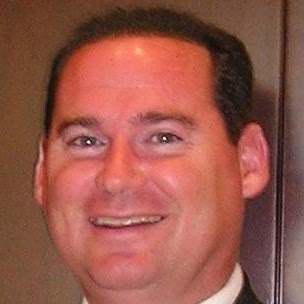Patrick Daniel Mcmullen
age ~74
from Corona, CA
- Also known as:
-
- Patrick D Mcmullen
- Patrick Living Mcmullen
- Patrick Mary York Mcmullen
- Patrick C Mcmullen
- Patrick Daniel Mc Mullen
- Patrick Te Mc Mullen
- Patric D Mcmullen
- Patrick Mc Mullen
- Patrick Mcmullin
- Patrick Mc
- Phone and address:
- 9209 Robinson Ln, Corona, CA 92883
Patrick Mcmullen Phones & Addresses
- 9209 Robinson Ln, Corona, CA 92883
- 1900 Benjamin Franklin Dr APT 205A, Sarasota, FL 34236
- Moncks Corner, SC
- San Francisco, CA
- Walnut Creek, CA
- 248 Dantley Way, Walnut Creek, CA 94598
Work
-
Position:Service Occupations
Education
-
Degree:High school graduate or higher
Resumes

Patrick Mcmullen
view source
Patrick Mcmullen
view source
Nothing More Than Any Thing Else
view source
Patrick Mcmullen
view sourceLocation:
United States

Patrick Mcmullen
view sourceLocation:
United States
Name / Title
Company / Classification
Phones & Addresses
President
PAVIP COOPERATIVE, INC
Business Services at Non-Commercial Site · Nonclassifiable Establishments
Business Services at Non-Commercial Site · Nonclassifiable Establishments
428 Sylvan Ave, San Mateo, CA 94403
2804 Gtwy Oaks Dr, Sacramento, CA 95833
2804 Gtwy Oaks Dr, Sacramento, CA 95833
Us Patents
-
Line Interactive Power Quality System
view source -
US Patent:20130002022, Jan 3, 2013
-
Filed:Jun 30, 2011
-
Appl. No.:13/174502
-
Inventors:Patrick T. McMullen - Villa Park CA, US
-
International Classification:H02J 3/30
-
US Classification:307 46
-
Abstract:A flywheel interface system for line interactive power correction comprises a flywheel system that includes a flywheel coupled to rotate with a motor/generator. A passive rectifier is coupled to the flywheel system for converting alternating current generated by the flywheel system to direct current. An active inverter is coupled to the passive rectifier for converting the direct current from the passive rectifier to alternating current and to output the alternating current to the load. A motor drive is coupled to the motor/generator of the flywheel system for driving the motor/generator to rotate the flywheel, the motor drive including a second passive rectifier coupled to a second active inverter.
-
Electric Machine With Inner Magnet Hub
view source -
US Patent:20130033136, Feb 7, 2013
-
Filed:Aug 3, 2011
-
Appl. No.:13/197219
-
Inventors:Patrick T. McMullen - Villa Park CA, US
-
International Classification:H02K 7/02
H02K 7/09
H02K 21/12 -
US Classification:310 74, 31015612, 310 905
-
Abstract:An electric machine includes a generally annular outer rotor supported to rotate about a rotational axis. The outer rotor defines an internal cavity therein and has a plurality of permanent magnets in the internal cavity generating a first magnetic field. An inner rotor is in the internal cavity and is supported to rotate about the rotational axis. The inner rotor has a plurality of permanent magnets about its perimeter that generate a second magnetic field. A generally annular stator is in the internal cavity between the outer rotor and the inner rotor. The stator has a stator winding supported by a non-magnetically conductive stator core. The stator winding is arranged to generate a field that interacts with the first and second magnetic fields. One of the outer rotor or the inner rotor is mechanically coupled to drive a load. The other of the outer rotor or the inner rotor is not mechanically coupled to drive the load.
-
Lubricating Downhole Rotating Machine
view source -
US Patent:20210293124, Sep 23, 2021
-
Filed:Jun 26, 2020
-
Appl. No.:16/913642
-
Inventors:- Cerritos CA, US
Patrick McMullen - Yorba Linda CA, US
Christopher Matthew Sellers - Fullerton CA, US
Herman Artinian - Huntington Beach CA, US -
Assignee:Upwing Energy, LLC - Cerritos CA
-
International Classification:E21B 43/12
F04D 13/06
F04D 13/08
F04D 29/06
H02K 7/14 -
Abstract:An electric machine is configured to be positioned within a wellbore. The electric machine enclosed within a housing isolates the electric machine from fluids within the wellbore. A first lubrication circuit includes a lubrication reservoir within the housing. The lubrication reservoir is fluidically connected to the electric machine. The first lubrication circuit is configured to provide lubrication to a bearing within the electric machine. A fluid rotor is configured to move or be moved by a fluid within the wellbore. A magnetic coupling couples the fluid rotor and a rotor of the electric machine to rotate in unison. A second lubrication circuit is configured to provide lubrication to a bearing supporting the fluid rotor.
-
Lubricating Downhole-Type Rotating Machines
view source -
US Patent:20210140240, May 13, 2021
-
Filed:Jan 25, 2021
-
Appl. No.:17/157383
-
Inventors:- Cerritos CA, US
Patrick McMullen - Yorba Linda CA, US
Herman Artinian - Huntington Beach CA, US -
International Classification:E21B 4/00
E21B 4/02
E21B 41/00
E21B 43/12
F04B 39/02
F04D 13/10
F16C 33/66 -
Abstract:A downhole-type device includes an electric machine. The electric machine includes an electrical rotor configured to couple with a device to drive or be driven by the electric machine. An electrical stator surrounds the electric rotor. The electric stator includes a seal configured to isolate stator windings from an outside, downhole environment. An inner surface of the seal and an outer surface of the electric rotor define an annulus exposed to the outside environment. A bearing couples the electric rotor to the electric stator. A lubrication system is fluidically coupled to the downhole-type device. The lubrication system includes a topside pressure pump and a downhole-type distribution manifold configured to be used within a wellbore. The distribution manifold is fluidically connected to the topside pressure pump and the bearing to receive a flow of lubricant from the topside pressure pump.
-
Lubricating Downhole-Type Rotating Machines
view source -
US Patent:20200325728, Oct 15, 2020
-
Filed:Apr 11, 2019
-
Appl. No.:16/381930
-
Inventors:- Cerritos CA, US
Patrick McMullen - Yorba Linda CA, US
Herman Artinian - Huntington Beach CA, US -
International Classification:E21B 4/00
E21B 43/12
F04B 39/02
E21B 4/02
F16C 33/66 -
Abstract:A downhole-type device includes a fluid-end with a fluid rotor configured to move or be rotated by wellbore fluids. A fluid stator surrounds and supports the fluid rotor. A first bearing couples the fluid rotor to the fluid stator. A second bearing couples the fluid rotor to the fluid stator. An electric machine includes an electrical rotor rotably coupled to the fluid rotor. The electric rotor is configured to rotate in unison with the fluid rotor. An electrical stator surrounds and supports the electric rotor. A lubrication system is fluidically coupled to the downhole-type device. The lubrication system includes a topside pressure pump. A downhole-type distribution manifold is within a wellbore. The distribution manifold fluidically connects to the topside pressure pump, the first bearing, and the second bearing.
-
Downhole-Type Tool For Artificial Lift
view source -
US Patent:20200217184, Jul 9, 2020
-
Filed:Jan 3, 2019
-
Appl. No.:16/239267
-
Inventors:- Cerritos CA, US
Patrick McMullen - Yorba Linda CA, US -
Assignee:Upwing Energy, LLC - Cerritos CA
-
International Classification:E21B 43/12
E21B 33/12 -
Abstract:An electric motor is configured to be positioned in a well. The motor includes a housing flooded with an incompressible fluid, a seal, a stator in the housing, and a rotor-impeller. The housing is configured to affix to a tubing of the well. The housing defines an inner bore having an inner bore wall continuous with an inner wall of the tubing for flow of well fluid. The housing defines a port that can be in fluid communication with the well. The seal seals the port against ingress of fluid. The seal is movable by the well fluid to apply a pressure on the incompressible fluid to equalize pressure between the incompressible fluid and the well fluid. The rotor-impeller is configured to be positioned within the inner bore of the housing. The rotor-impeller is configured to be retrievable from the well while the stator remains in the well.
-
Reducing Bearing Load In A Regenerative Turbine Pump
view source -
US Patent:20190203719, Jul 4, 2019
-
Filed:Dec 28, 2017
-
Appl. No.:15/857443
-
Inventors:- Cerritos CA, US
Justin Jongsik Oh - Irvine CA, US
Patrick McMullen - Villa Park CA, US -
Assignee:Upwing Energy, LLC - Cerritos CA
-
International Classification:F04D 5/00
F01D 25/16
F04D 29/24
F16C 17/04
F16C 32/04 -
Abstract:A regenerative turbine impeller includes a first side and a second side. An impeller housing surrounds the regenerative turbine impeller. The impeller housing includes a seal separating the first side and the second side of the regenerative turbine impeller. A first fluid inlet is fluidically coupled to the first side of the regenerative turbine impeller. A first fluid outlet is fluidically coupled to the first side of the regenerative turbine impeller. A second fluid inlet is fluidically coupled to the second side of the regenerative turbine impeller. A second fluid outlet is fluidically coupled to the second side of the regenerative turbine impeller.
-
Active Magnetic Bearing Control For Downhole-Type System
view source -
US Patent:20190085669, Mar 21, 2019
-
Filed:Dec 28, 2017
-
Appl. No.:15/857524
-
Inventors:- Cerritos CA, US
Patrick McMullen - Villa Park CA, US -
Assignee:Upwing Energy, LLC - Cerritos CA
-
International Classification:E21B 43/12
E21B 47/09
E21B 47/12 -
Abstract:A downhole-type system includes a rotatable shaft, a downhole-type magnetic bearing coupled to the rotatable shaft, a downhole-type sensor, a surface-type controller, and a surface-type amplifier coupled to the magnetic bearing. The magnetic bearing can control levitation of the rotatable shaft. The downhole-type sensor can detect a position of the rotatable shaft in a downhole location and generate a first signal based on the detected position. The surface-type controller can receive the first signal, determine an amount of force to apply to the shaft, and generate a second signal corresponding to the determined amount of force. The surface-type amplifier can receive the second signal, amplify the second signal to a sufficient level to drive the magnetic bearing to apply force to the rotatable shaft to control the levitation of the rotatable shaft at the downhole location, and transmit the amplified second signal to the magnetic bearing.
Lawyers & Attorneys

Patrick McMullen - Lawyer
view sourceAddress:
1625 Eye Street, Nw
Phone:
2023835263 (Phone), 2023835414 (Fax)
Work:
O'Melveny & Myers LLP
Specialties:
Business Law
Employment Law
Personal Injury
Class Actions, Mass Torts, and Aggregated Litigation
ERISA Litigation
General Civil
Employment Law
Personal Injury
Class Actions, Mass Torts, and Aggregated Litigation
ERISA Litigation
General Civil
Jurisdiction:
District of Columbia
District of Columbia; Maryland
District of Columbia; Maryland
Education:
Wake Forest University, MA
Mary Washington College, BS
Northwestern University
Mary Washington College, BS
Northwestern University
Links:
Website
Googleplus

Patrick Mcmullen
Lived:
Virginia Beach, VA
Moyock, NC
Gibraltar, Gibraltar
Newquay, Cornwall, UK
Newfoundland, Canada
Scranton, PA
Victoria, BC, Canada
Mt Pocono, PA
Murrieta, CA
Moyock, NC
Gibraltar, Gibraltar
Newquay, Cornwall, UK
Newfoundland, Canada
Scranton, PA
Victoria, BC, Canada
Mt Pocono, PA
Murrieta, CA
Education:
Calvary Chapel Bible College - Theology
Tagline:
Hey it's Patrick

Patrick Mcmullen
Work:
AmeriCTO - CEO
JobbDepot - Sales Manager
TD Bank - Oracle DBA
Hydro Quebec - Oracle DBA
Ville de Montreal - Oracle DBA
Federal Gouvernment - Oracle DBA
Provincial Gouvernment - Oracle DBA
JobbDepot - Sales Manager
TD Bank - Oracle DBA
Hydro Quebec - Oracle DBA
Ville de Montreal - Oracle DBA
Federal Gouvernment - Oracle DBA
Provincial Gouvernment - Oracle DBA
Education:
McGill University - MIS, Oracle - Oracle DBA
About:
Owner of multiple corporations across the USA & Canada.

Patrick Mcmullen
Work:
Fizziology - Senior Analyst (2012)
DavesComputerTips.com - Writer / Editor (2011-2012)
Indiana University - Research technician (2011-2012)
DavesComputerTips.com - Writer / Editor (2011-2012)
Indiana University - Research technician (2011-2012)
Education:
DePauw University - Psychology
Tagline:
The mind: it's what the brain does
Bragging Rights:
Graduated DePauw never taking a class before 10:00am

Patrick Mcmullen
Work:
TriComB2B - Web Developer (2010)
Cox Communications - Developer/Analyst (2005-2009)
NCR Corporation - Technical Solutions Intern (2004-2005)
Cox Communications - Developer/Analyst (2005-2009)
NCR Corporation - Technical Solutions Intern (2004-2005)
Education:
Wright State University - Management Information Systems, Beavercreek High School - Diploma

Patrick Mcmullen

Patrick Mcmullen

Patrick Mcmullen

Patrick Mcmullen
Plaxo

Patrick L. McMullen
view source
PATRICK MCMULLEN
view sourceOwner / Master Instructor at PMM LLC ta/ Self Defe...

Patrick McMullen
view sourceBoulder, CO
Youtube
Classmates

Patrick McMullen
view sourceSchools:
Monroe High School Monroe MI 1970-1974
Community:
Christine Palmer

Patrick McMullen
view sourceSchools:
Northeast Catholic High School Philadelphia PA 1965-1969
Community:
Kathleen Manser, Francis Alba, Jeff Romanczuk, Joseph Kinsey, Barbara Shispinski

Patrick McMullen
view sourceSchools:
Blake High School Minneapolis MN 1983-1990
Community:
Arturo Guzman

Patrick McMullen
view sourceSchools:
St. Petersburg Catholic High School St. Petersburg FL 1995-1999
Community:
Ken Anderson, Chris Allison

Patrick McMullen
view sourceSchools:
Pacifica High School Garden Grove CA 1974-1978
Community:
Lisa Van Hoosen

Patrick McMullen
view sourceSchools:
Stanford Community High School Stanford IL 1962-1966
Community:
Mary Underwood, Betty Bagosy

Patrick McMullen
view sourceSchools:
McGuffey High School Claysville PA 1977-1981

Patrick McMullen (Claude...
view sourceSchools:
LAURIER MCDONLD HIGH SCHOOL Montreal Kuwait 1975-1979
Community:
Luisa Pasqua, Fred Dasilva, Sylvie Bouchard, Bettina Pinelli, Joanne Traczyk, Angelo Liberta, Frank Franco, Joe Zampino, Antonio Marricco

Patrick McMullen
view source
Patrick McMullen
view source
Patrick Mcmullen
view source
Patrick McMullen
view source
Patrick Mcmullen
view source
Kyle Patrick McMullen
view source
Patrick Mcmullen
view source
Patrick Jorden McMullen
view sourceFlickr
Myspace
Get Report for Patrick Daniel Mcmullen from Corona, CA, age ~74
























